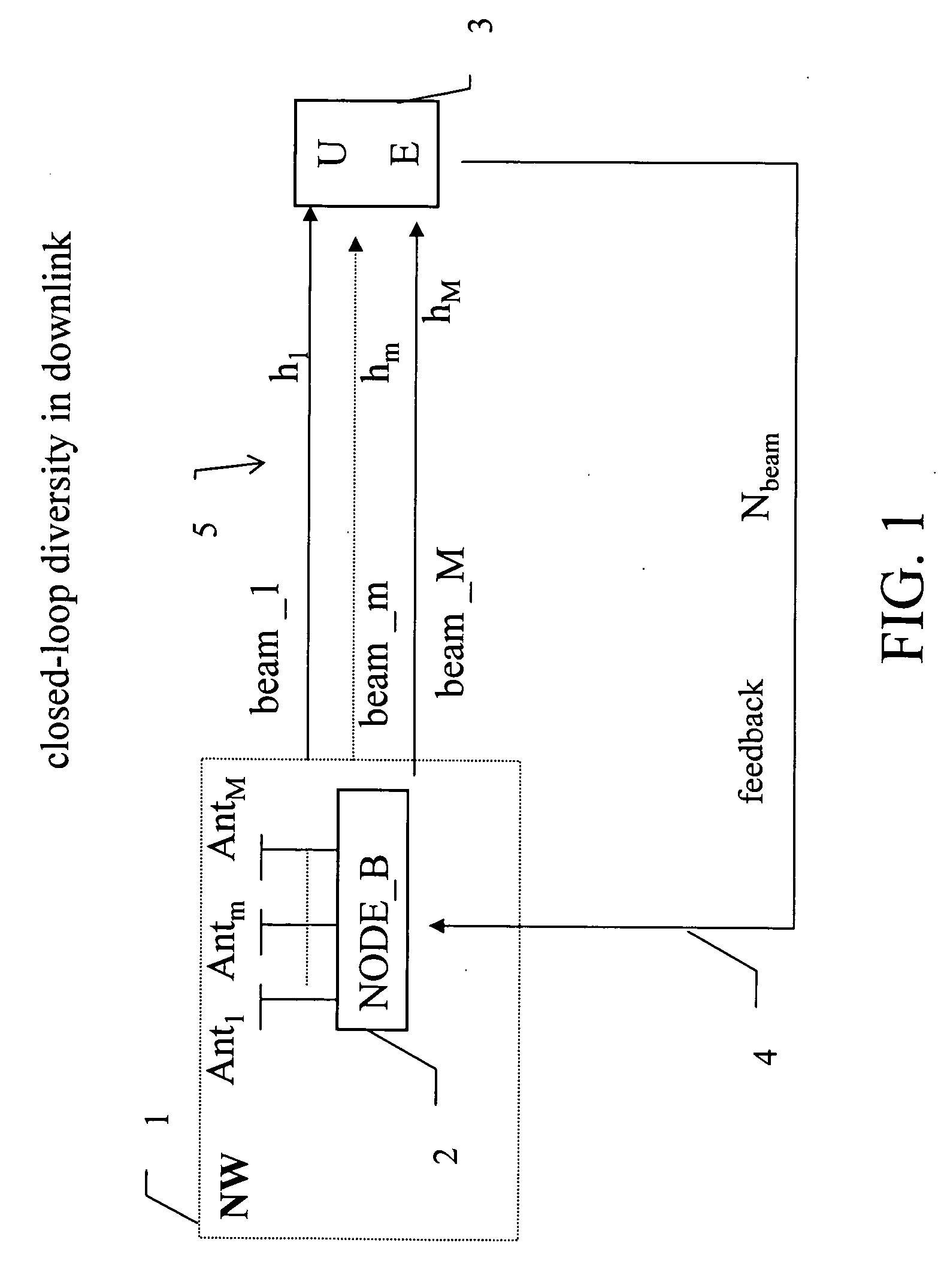Closed-loop signalling method for controlling multiple transmit beams and correspondingly adapted transceiver devices
- Summary
- Abstract
- Description
- Claims
- Application Information
AI Technical Summary
Benefits of technology
Problems solved by technology
Method used
Image
Examples
specific embodiments
[0126] Throughout the subsequent description, it is assumed that Nbeam has a value not greater than “2” in order to simplify the description. Thus, cases of Nbeam=1 and Nbeam=2 are described.
specific embodiment no.1
Specific Embodiment No. 1
[0127] A first specific embodiment will be described in the following with reference to FIG. 4. FIG. 4 illustrates the entire scenario while going into details of FIGS. 2 and 3, respectively.
[0128] It is to be noted that—for all embodiments—the signal processings as performed according to the method and described in detail herein are performed by the evaluator 3b, derivator 3c, and selector 3d, respectively (insofar as the UE 3 is concerned) and by the calculator 2c, controller 2b, respectively, as far as the Node_B 2 is concerned. In particular, the implementation of the specific functionality is advantageously effected in hardware as a digital signal processor DSP, or an application specific integrated circuit ASIC, or the like. Such hardware realization is technology independent and can be accomplished using bipolar or MOS, CMOS, BiCMOS technology or others and / or hybrids thereof. In case of a software implementation of the functionalities, this is progr...
specific embodiment no.2
Specific Embodiment No. 2
[0186] According to another aspect of such concept, to further reduce signalling, the UE may signal only the least-dominant beam, e.g. the one with smallest eigenvalue (stated in other words, not the “best” eigenvalue / eigenvector is selected (and processed) as in specific embodiment no. 1, but the “worst” eigenvector is selected for being fed back). This corresponds to deriving control information on “directions” where not to transmit from the base station.
[0187] For example with 4 transmit elements, using MIMO transmission method requiring 3 transmit beams, the control (beamforming) information for forming three beams can be derived at the first transceiver Node_B as being orthogonal to the signalled least dominant beam received via the feedback path, using null space projection. Any unitary basis orthogonal to the least dominant beam is feasible. Thus, the beamforming matrix to be used at the Node_B can be derived based on the “worst” eigenvector, as desc...
PUM
 Login to View More
Login to View More Abstract
Description
Claims
Application Information
 Login to View More
Login to View More - R&D
- Intellectual Property
- Life Sciences
- Materials
- Tech Scout
- Unparalleled Data Quality
- Higher Quality Content
- 60% Fewer Hallucinations
Browse by: Latest US Patents, China's latest patents, Technical Efficacy Thesaurus, Application Domain, Technology Topic, Popular Technical Reports.
© 2025 PatSnap. All rights reserved.Legal|Privacy policy|Modern Slavery Act Transparency Statement|Sitemap|About US| Contact US: help@patsnap.com



